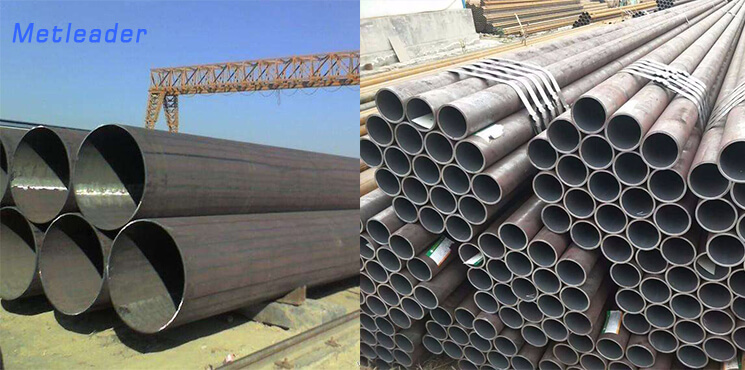Carbon steel seamless steel pipe
The seamless steel pipe is a steel pipe made of a single piece of metal with no joints on the surface, called a seamless steel pipe. According to the production method, the seamless pipe is divided into a hot rolled pipe, a cold rolled pipe, a cold drawn pipe, an extruded pipe, a top pipe, and the like. According to the shape of the section, the seamless steel tube is divided into two types: a circular shape and a special shape. The shaped tube has a plurality of complicated shapes such as a square shape, an elliptical shape, a triangular shape, a hexagonal shape, a melon shape, a star shape, and a winged tube. The maximum diameter is 650mm and the minimum diameter is 0.3mm. Depending on the application, there are thick-walled tubes and thin-walled tubes. Seamless steel pipes are mainly used as petroleum geological drilling pipes, cracking pipes for petrochemicals, boiler tubes, bearing tubes, and high-precision structural steel tubes for automobiles, tractors, and aviation.

Carbon steel seamless steel pipe classification:
Jointless steel pipe along the perimeter of its cross section. According to different production methods, it is divided into hot-rolled pipe, cold-rolled pipe, cold-drawn pipe, extruded pipe, and top pipe, etc., each with its own process regulations. The material is ordinary and high-quality carbon structural steel (Q215-A~Q275-A and 10~50 steel), low alloy steel (09MnV, 16Mn, etc.), alloy steel, stainless acid-resistant steel, etc. Divided into general use (for water, gas pipelines and structural parts, mechanical parts) and special (for boilers, geological exploration, bearings, acid resistance, etc.).

Seamless steel pipe production process
1 Main production process of hot-rolled seamless steel pipe ( main inspection process):
Tube blank preparation and inspection →tube billet heating→perforation→rolling tube→steel tube reheating→fixing (reducing) diameter→heat treatment →finishing of finished pipe→finishing→inspection △(non-destructive, physicochemical, table inspection)→inbound
2 cold rolling (drawing) seamless steel pipe main production process:
Blank preparation → pickling lubrication → cold rolling (pull) → heat treatment → straightening → finishing → inspection
The production process of general seamless steel pipe can be divided into cold drawing and hot rolling. The production process of cold rolled seamless steel pipe is generally more complicated than hot rolling. The pipe blank must first be rolled in three rolls. The sizing test, if the surface does not respond to the crack, the round tube is cut by a cutter and cut into a blank having a length of about one meter.

Round tube billet → heating → perforation → three-roll cross-rolling, continuous rolling or extrusion → pipe removal → sizing (or reducing diameter) → cooling → straightening → hydraulic test (or flaw detection) → marking → storage seamless steel pipe The steel tube or the solid tube blank is made into a capillary tube by perforation, and then is formed by hot rolling, cold rolling or cold drawing. The specifications of the seamless steel pipe are expressed by the outer diameter * wall thickness in millimeters.
The outer diameter of hot-rolled seamless pipe is generally larger than 32mm, the wall thickness is 2.5-200mm, the outer diameter of cold-rolled seamless steel pipe can reach 6mm, the wall thickness can be 0.25mm, the outer diameter of thin-walled pipe can reach 5mm, the wall thickness is less than 0.25mm, cold Rolling is more accurate than hot rolling.
Using of carbon steel seamless steel tube
Carbon steel seamless steel tubes have hollow sections and are used in large quantities as pipelines for transporting fluids, such as pipelines for transporting petroleum, natural gas, gas, water and certain solid materials. Compared with solid steel such as round steel, the steel pipe has a lighter weight when it has the same bending and torsional strength, and is an economical section steel.
Widely used in the manufacture of structural parts and mechanical parts, such as oil drill pipes, automotive drive shafts, bicycle frames and steel scaffolding used in construction, such as steel scaffolding, to make ring parts, improve material utilization, simplify manufacturing processes, save materials and processing In working hours, steel pipes have been widely used for manufacturing.







